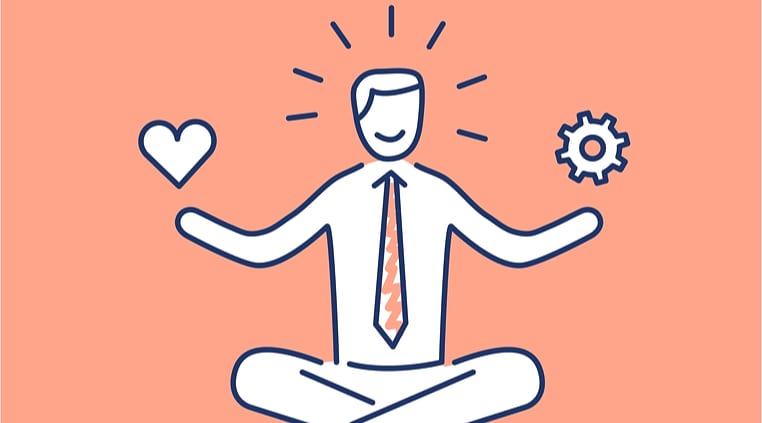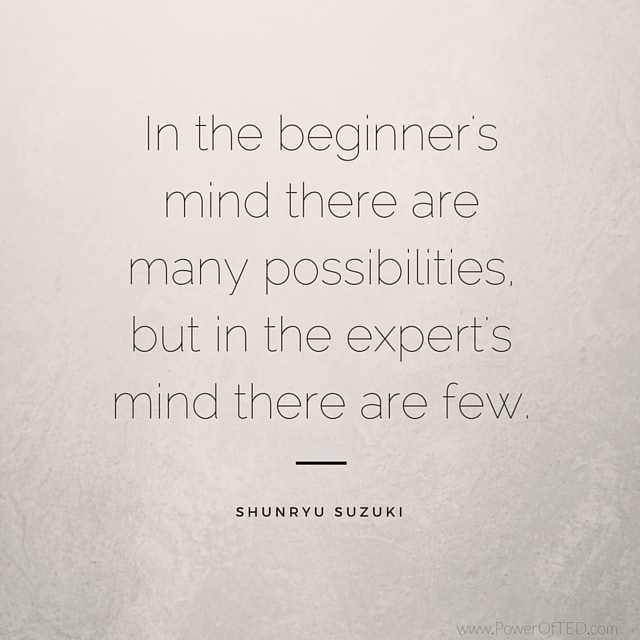Think Like A Data Scientist

I am going to throw down a few caveats before I start this post. I am not a data scientist. I am an arts guy. Well, scratch that. I am a marketing guy. And, well, a sales guy, and a box office guy and hell I’ve even been known to be a tech guy in my time.
If my multi-hat wearing life sounds familiar (and if you work in the arts sector - I bet it does), then you’ll also understand why I say I am a data guy too - but not a data scientist.
As arts organisations, we gather a lot of data (and of course we are GDPR compliant). That's why we have talked a lot about data, data-driven thinking and helped loads of organisations in the Ticketsolve community get the most out of their data to help them better engage with their audiences.
And as we get more and more involved with our data, I think it means we need to start thinking a little differently.
What is a Data Scientist?
Data science has been around since the 1960s - at least that is when it first got its label. But as a discipline - specifically as a legitimate department in larger organisations - that is much more recent. Alongside the rise of the Internet has come data - mountains of data. The people tasked with understanding and interpreting all of this complex digital data are data scientists - and they are becoming more and more indispensable to institutions and decision making.
So ultimately, all this data is analysed by people. People that have a very particular set of skills (that have nothing to do with Liam Neeson sadly). So while you won’t be tracking down any kidnappers using our post, you will most certainly be able to get more out of your data and data analysis and hopefully think more like a data scientist.
Empathy

While your first thought when it comes to data might not be empathy - it should. Data is only as good as how you use it to help your customers and engage with them. Of course, data can help you sell more, but our ultimate goal is building relationships with our community and patrons. We cannot do that without putting ourselves in our customers' shoes. The best way for your data to have meaning is to have empathy at its core and think like your customers.
Think Insight Not Information

You might think that data is all about information, but it is really about the insight you can pull out from that information. Information is just that - data points. Insight is what drives action - it makes that data useful! But how do you do this? There are two key things to think about when looking at your data:
-
What are the main takeaways (stick to a max of three if you can)?
-
What actions can we make based on the above?
Adopt a Beginners Mindset

Okay, we are going to get Zen for a minute - literally. A beginner’s mindset (from Zen Buddhist philosophy) forces you to “have an attitude of openness, eagerness, and lack of preconceptions when studying a subject, even when studying at an advanced level, just as a beginner in that subject would.”
So rather than thinking that you already know the answer your data will give you, keep an open mind to what the data is telling you. Imagine yourself as a beginner in your job looking at this data for the first time. This technique of a beginner’s mindset is especially good when you are trying to solve a problem or get creative; beginners often have limitless possibilities in mind, experts are often limited by what they already know.
Challenge Your Assumptions
The notion of challenging your assumptions is about questioning everything, and it goes hand in hand with adopting a beginners mindset when considering your data. Be ruthless here. Talk to your team. Dig down into what you and your team deeply hold to be true - and see if the data reflects that. And don’t be afraid to change tack if what you are doing doesn’t work. A good data scientist is ready to shift gears if the data is leading them elsewhere.
Know What You Don’t Know
With all this data and analysis you would assume that you would have a nice full picture of your audiences. But chances are you won’t. There are gaps, black spots in an otherwise gorgeous audience picture. Knowing what those blind spots are can help you formulate a plan to get the information you need to develop a better picture of your customers.
So there you have it! If you want help tackling your data give us a shout - we’d love to help you gain insight into your audiences.
Categories
Recent posts
Archive
- December 2025 (2)
- November 2025 (1)
- October 2025 (3)
- September 2025 (1)
- August 2025 (3)
- July 2025 (3)
- June 2025 (3)
- May 2025 (4)
- April 2025 (5)
- March 2025 (5)
- February 2025 (4)
- January 2025 (4)
- December 2024 (3)
- November 2024 (5)
- October 2024 (4)
- September 2024 (7)
- August 2024 (5)
- July 2024 (3)
- June 2024 (3)
- May 2024 (3)
- April 2024 (3)
- March 2024 (4)
- February 2024 (5)
- January 2024 (3)
- December 2023 (3)
- November 2023 (4)
- October 2023 (4)
- September 2023 (5)
- August 2023 (3)
- July 2023 (4)
- June 2023 (4)
- May 2023 (5)
- April 2023 (4)
- March 2023 (4)
- February 2023 (5)
- January 2023 (4)
- December 2022 (4)
- November 2022 (3)
- October 2022 (4)
- September 2022 (5)
- August 2022 (2)
- July 2022 (4)
- June 2022 (5)
- May 2022 (4)
- April 2022 (5)
- March 2022 (3)
- February 2022 (4)
- January 2022 (4)
- December 2021 (2)
- November 2021 (3)
- October 2021 (5)
- September 2021 (4)
- August 2021 (4)
- July 2021 (3)
- June 2021 (4)
- May 2021 (2)
- April 2021 (4)
- March 2021 (5)
- February 2021 (4)
- January 2021 (5)
- December 2020 (4)
- November 2020 (4)
- October 2020 (5)
- September 2020 (5)
- August 2020 (4)
- July 2020 (7)
- June 2020 (5)
- May 2020 (5)
- April 2020 (5)
- March 2020 (8)
- February 2020 (4)
- January 2020 (5)
- December 2019 (3)
- November 2019 (5)
- October 2019 (4)
- September 2019 (4)
- August 2019 (5)
- July 2019 (4)
- June 2019 (4)
- May 2019 (5)
- April 2019 (4)
- March 2019 (4)
- February 2019 (3)
- January 2019 (5)
- December 2018 (4)
- November 2018 (8)
- October 2018 (2)
- September 2018 (3)
- August 2018 (5)
- July 2018 (4)
- June 2018 (4)
- May 2018 (1)
- April 2018 (1)
- March 2018 (3)
- February 2018 (2)
- December 2017 (2)
- November 2017 (3)
- October 2017 (4)
- September 2017 (2)
- August 2017 (1)
- July 2017 (5)
- June 2017 (3)
- May 2017 (2)
- April 2017 (3)
- March 2017 (2)
- February 2017 (3)
- January 2017 (3)
- December 2016 (4)
- November 2016 (1)
- September 2016 (1)
- July 2016 (3)
- June 2016 (1)
- May 2016 (2)
- April 2016 (2)
- February 2016 (1)
- January 2016 (3)
- December 2015 (2)
- September 2015 (1)
- August 2015 (2)
- July 2015 (1)
- June 2015 (2)
- May 2015 (2)
- April 2015 (5)
- March 2015 (2)
- February 2015 (2)
- January 2015 (4)
- December 2014 (3)
- November 2014 (3)
- October 2014 (2)
- September 2014 (3)
- August 2014 (3)
- July 2014 (3)
- June 2014 (7)
- May 2014 (6)
- April 2014 (3)
- March 2014 (2)
- February 2014 (1)
- January 2014 (3)
- December 2013 (1)
- August 2013 (1)
- June 2013 (1)
- April 2013 (1)
Sign up for regular updates


